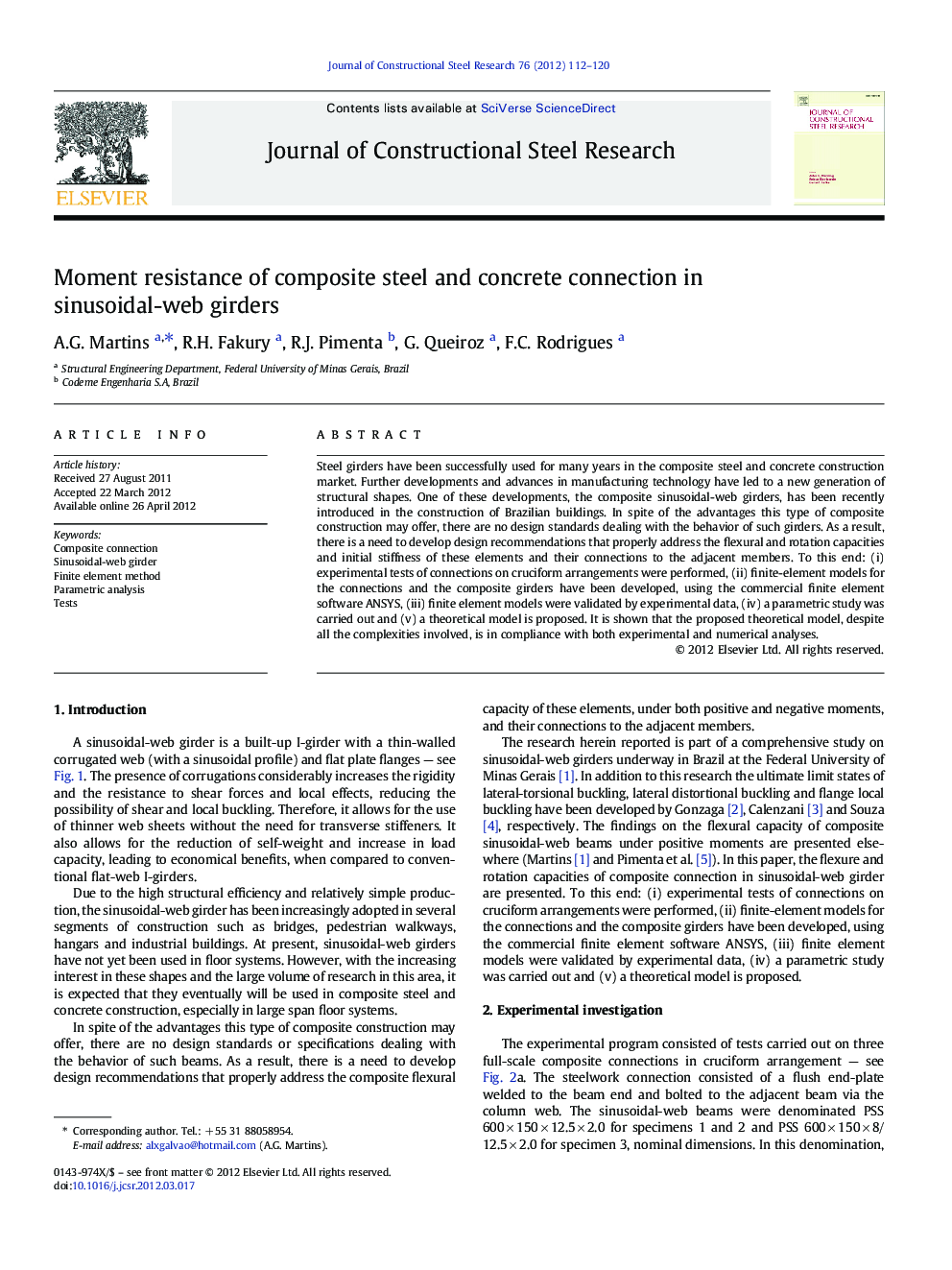| Article ID | Journal | Published Year | Pages | File Type |
|---|---|---|---|---|
| 285115 | Journal of Constructional Steel Research | 2012 | 9 Pages |
Steel girders have been successfully used for many years in the composite steel and concrete construction market. Further developments and advances in manufacturing technology have led to a new generation of structural shapes. One of these developments, the composite sinusoidal-web girders, has been recently introduced in the construction of Brazilian buildings. In spite of the advantages this type of composite construction may offer, there are no design standards dealing with the behavior of such girders. As a result, there is a need to develop design recommendations that properly address the flexural and rotation capacities and initial stiffness of these elements and their connections to the adjacent members. To this end: (i) experimental tests of connections on cruciform arrangements were performed, (ii) finite-element models for the connections and the composite girders have been developed, using the commercial finite element software ANSYS, (iii) finite element models were validated by experimental data, (iv) a parametric study was carried out and (v) a theoretical model is proposed. It is shown that the proposed theoretical model, despite all the complexities involved, is in compliance with both experimental and numerical analyses.
►Tests of composite connections in sinusoidal-web girders were performed. ►Finite element models for the connection and the composite girder were developed. ►Finite element models were validated by experimental tests. ►A parametric study was done. ►A theoretical model was proposed.
